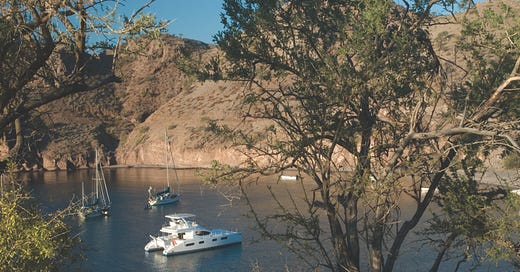Magic on the Sea of Cortez: Let Steinbeck Be Your Guide
East Coast Folks Need To Cruise Baja at Least Once
“The very air here is miraculous, and outlines reality change with the moment. The sky sucks up the land and disgorges it. A dream hangs over the whole region, a brooding kind of hallucination.”—John Steinbeck, “The Log from the Sea of Cortez,” 1941
On our second day out from La Paz, heading north over the Sea of Cortez, I recognized yet another familia…
Keep reading with a 7-day free trial
Subscribe to LOOSE CANNON to keep reading this post and get 7 days of free access to the full post archives.



